The rapid development of the electronics industry is inseparable from electricity. Since we need to use electricity, it involves a control circuit and a power circuit. A key part of the power circuit is the Power Management Integrated Circuit (PMIC). For those with years of experience in the electronics industry or newcomers to power design, do you really understand PMICs?
What is a Power Management Integrated Circuit (PMIC)?
A Power Management Integrated Circuit (PMIC) is a chip responsible for the conversion, distribution, detection, and other management of electrical energy in electronic device systems. It mainly identifies the power supply amplitude for the CPU, generates corresponding short pulse waves, and drives subsequent circuits for power output. The selection of power chips includes the choice of commonly used power chips and the selection of PMICs. The two main types of power devices are DC/DC and LDO. A simple judgment criterion is that if the input voltage and output voltage are very close, it is best to choose an LDO regulator; if there is a large difference between the input and output voltages or a large voltage drop, it is preferable to consider using a switching DC/DC power chip.
Here, we will not elaborate too much on the selection of power chips. The main focus will be on the specific selection and design of PMICs.
What are the main factors in selecting a PMIC?
The scope of power management is quite broad, including standalone power conversion (mainly DC to DC), standalone power distribution and detection, as well as systems that combine power conversion and management. Accordingly, the classification of PMICs includes these aspects, such as linear power chips, voltage reference chips, switching power chips, LCD driver chips, LED driver chips, voltage detection chips, and battery charging management chips. Below is a brief introduction to the main types and applications of PMICs.
If the designed circuit requires the power supply to have high noise and ripple suppression, occupy a small PCB area (such as in mobile phones), not allow the use of inductors (like in mobile phones), require instantaneous calibration and output state self-checking functions, and have low voltage drop and power consumption, then a linear power supply is the most appropriate choice. This type of power supply includes technologies such as precise voltage references, high-performance, low-noise operational amplifiers, low-dropout regulators, and low static current.
In low-power supply, operational amplifier negative power supply, LCD/LED driving, etc., capacitor-based switching power chips, commonly known as charge pumps, are often used. Many chip products are based on the charge pump working principle, such as the AAT3113. This is a white LED driver chip composed of a low-noise, constant-frequency charge pump DC/DC converter. The AAT3113 uses a fractional conversion (1.5×) to improve efficiency. This device drives 4 channels of LEDs in parallel. The input voltage range is 2.7V to 5.5V, providing about 20mA of current for each output. This device also features thermal management to protect against short circuits at any output pin. Its embedded soft-start circuit prevents current overshoot at startup. The AAT3113 uses a simple serial control interface for enabling, disabling, and 32-level logarithmic brightness control.
The application range of inductor-based DC/DC chips is the most extensive, including applications in handheld computers, cameras, backup batteries, portable instruments, micro-telephones, motor speed control, display bias, and color adjusters. The main technologies include: BOOST structure current mode loop stability analysis, BUCK structure voltage mode loop stability analysis, BUCK structure current mode loop stability analysis, overcurrent, overtemperature, overvoltage, and soft-start protection functions, synchronous rectification technology analysis, and reference voltage technology analysis.
In addition to basic power conversion chips, PMICs also include power control chips aimed at making rational use of power. For example, NiMH battery smart fast charging chips, lithium-ion battery charging and discharging management chips, lithium-ion battery overvoltage, overcurrent, overtemperature, and short-circuit protection chips; chips for switching management between line power and backup batteries, USB power management chips; charge pumps, multi-channel LDO power supplies, power sequencing control, various protections, and complex power chips for battery charging and discharging management, etc.
Especially in consumer electronics, such as portable DVDs, mobile phones, and digital cameras, just 1-2 PMICs can provide complex multi-channel power supplies to maximize system performance.
To help everyone quickly grasp the study of PMICs, from standard linear regulators to high-efficiency DC/DC converters to battery management devices, we have selected ten classic books on PMICs for your study and reference.
1. Fundamentals of Power Electronics
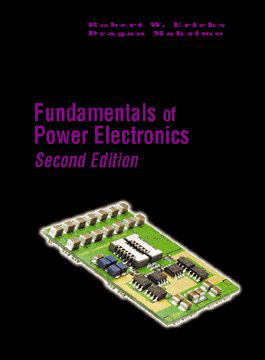
R.W. Erickson’s “Fundamentals of Power Electronics” is a classic work that comprehensively and foundationally explains the basic technologies of power electronics. It is a classic power book written by a foreign author, and it is recommended to read the English version, as the content is very easy to understand. It is a classic among classics that you absolutely cannot miss! (Additionally, 1326 pages of teaching materials are provided~)
2. Power Management Integrated Circuits and Applications (Vol. 1 + Vol. 2)
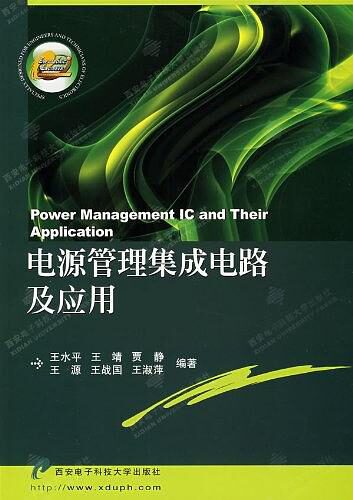
The book “Power Management Integrated Circuits and Applications” is divided into two volumes. This book collects over fifty of the most commonly used and widely applied power management integrated circuits, divided into four aspects: PC cards, USB interfaces, power conversion switches, and isolation. The book focuses on chips from Texas Instruments, Maxim, and American Semiconductor companies, introducing their electrical performance parameters, pin connections, package shapes, internal principle block diagrams, and typical application circuits, as well as various practical circuits and application expansion circuits.
3. TI Power Management Guide + Power Topology Reference + Common Hard Switching Power Supply Design (3 Volumes)

Texas Instruments (TI) provides complete power solution design guidelines for a full range of high-performance products. This includes three sets of technical development documents. It contains the selection of the entire range of power products (power management guide), various power topology waveforms and formulas, and the selection design of 17 common hard switching power topologies.
4. Selected Development Materials for Power Management Technology (Exclusive Original by Electronic Enthusiast Network)
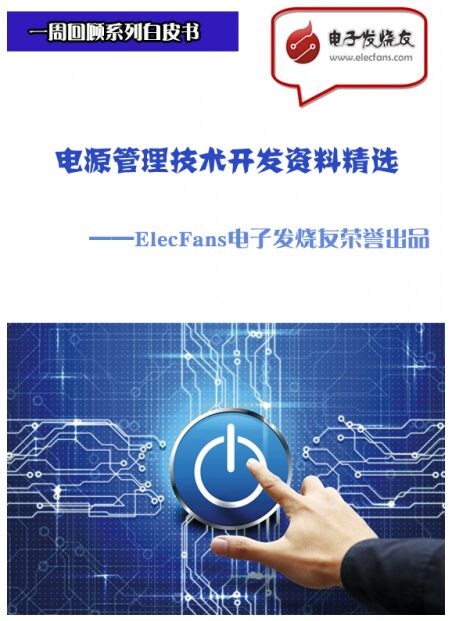
In daily life, people’s dependence on electronic devices is becoming increasingly serious. The updates in electronic technology also mean that people have high expectations for the technological development of power sources. The importance of power has made power management a key technology that spans multiple fields, including industry, energy, and transportation, and has already approached maturity.
To help engineers better conduct power management design, the Electronic Enthusiast Network has specifically produced a weekly review series white paper entitled “Selected Development Materials for Power Management Technology,” which includes key technology analysis of power management, numerous circuit design diagrams, and mainstream manufacturer solutions.
5. Power Management Chip Design Tutorial
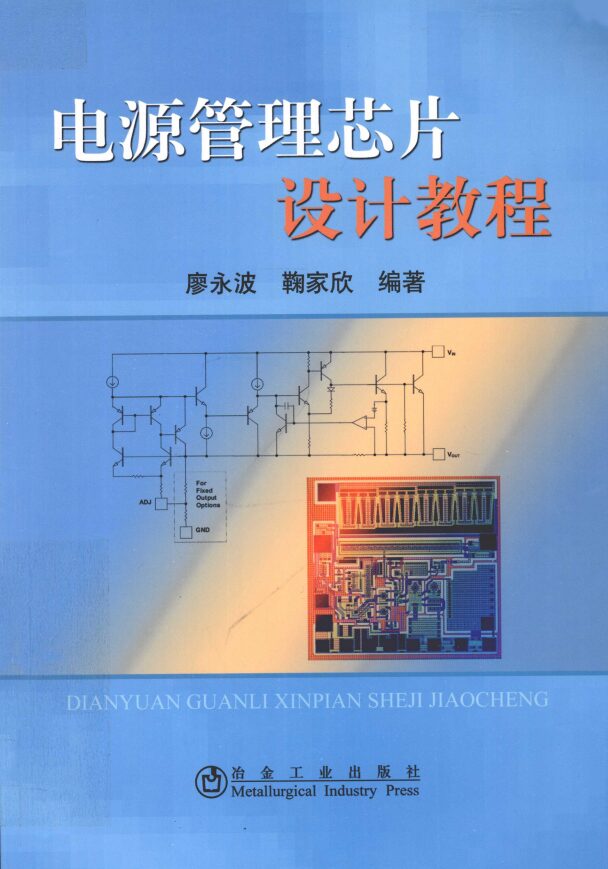
The “Power Management Chip Design Tutorial” briefly introduces the development trends and basic principles of voltage regulators and DC-DC converters; based on functional requirements and performance indicators, it provides explanations of the design, simulation, and verification of each functional module and the overall circuit based on a concise overall circuit design; in addition, layout design and verification are conducted according to the 0.5μm process rules of a certain process line. The content includes an introduction, Workview software, basic principles of DC-DC converters, design and simulation verification of various sub-modules in the control circuit, overall circuit simulation, process, layout design, and verification.
6. Power Management Technology for Portable Electronic Devices
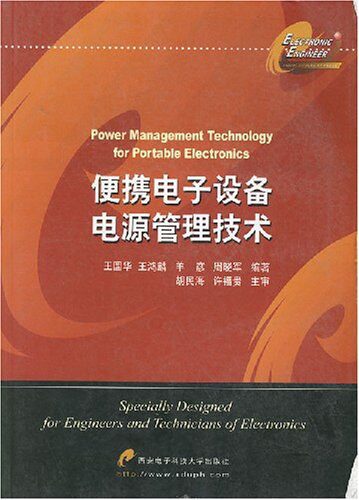
This book provides a detailed introduction to power and its management technologies widely used in portable electronic devices, including high-efficiency low-dropout linear regulators, DC voltage conversion technologies and energy-saving management, network-controlled lead-acid, nickel-hydrogen, and lithium-ion battery principles and characteristics, battery charging management technologies, lithium-ion battery safety management and capacity monitoring technologies, offline small-power switching voltage regulator management technologies, and applications of supercapacitors in portable electronic devices, as well as handheld (shaking) generator power supply systems.
7. Power Supply Cookbook (Bilingual Edition)
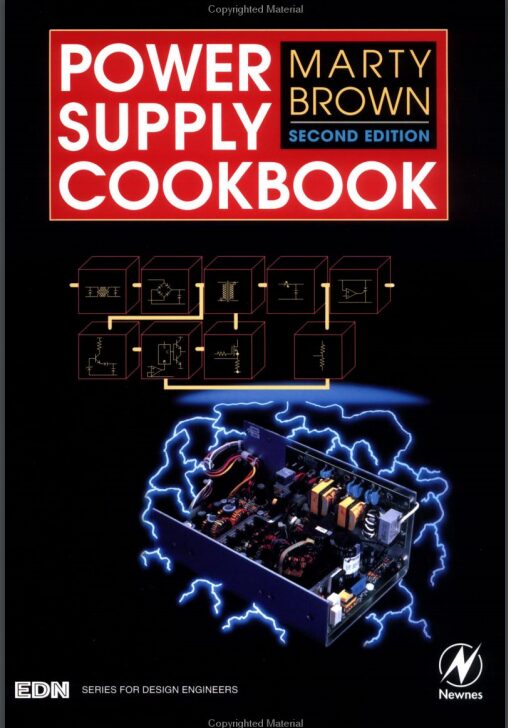
The “Power Supply Cookbook” by Marty Brown, translated by Xu Dehong into Chinese, is a classic power design work! Here, I provide both the English original version and the Chinese translation version (2 books in total) for everyone to refer to and read!
This book is a reference that combines theory and engineering design of switching power supplies. It discusses the role of power supplies in systems, the power supply design process, switching power supply design, comparisons between switching and linear power supplies, and shaping techniques to improve switching power supply efficiency. It focuses on the selection of switching power supply circuit topologies, transformer and inductor design, power driver circuits, feedback compensation parameter design, and protection circuits. It also provides in-depth introductions to advanced technologies for reducing switching power supply losses, such as synchronous rectification technology, lossless snubber circuits, and waveform shaping techniques. Additionally, it introduces design methods for switching power supplies through numerous examples, as well as power factor correction, printed circuit design, thermal design, noise control, and electromagnetic interference suppression.
8. Switch-Mode Power Supply Handbook (Bilingual Edition)

The “Switch-Mode Power Supply Handbook” by Keith Billings is written by an engineer with decades of experience and is also a classic! Many of the contents in the book written by Zhang Zhansong on switching power supplies have been translated from this source. It also provides both the English original version and the Chinese translation version (2 books in total) for everyone to study!
This book mainly includes the functions and basic requirements of commonly used fine wire switching power supplies, design principles and times, practical design, and AC power factor correction, providing numerous circuit diagrams and waveforms, as well as rare noise models to facilitate reader analysis and design.
9. Mastering Switching Power Supply Design (Bilingual Edition)
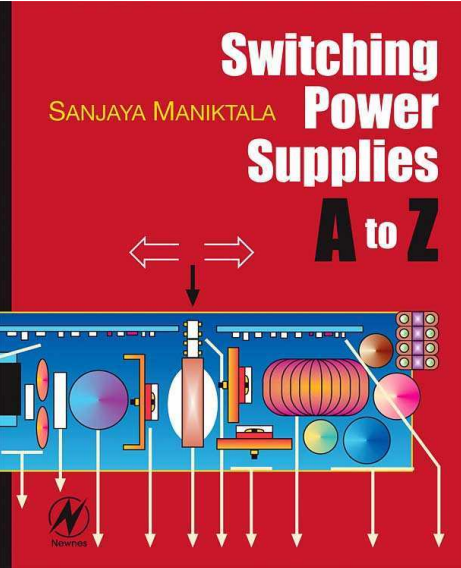
Providing both the English original version and the Chinese translation version (2 books in total) for mutual comparison and study, this book is based on the author’s years of experience in switching power supply design, starting from the analysis of the most basic components of switching converters—the principle of inductors, and systematically discussing DC-DC converters with wide input voltage (including offline forward and flyback power supplies) and their magnetic component design, MOSFET conduction and switching losses, PCB routing techniques, stability of control loops under voltage/current modes for three main topologies, and the theory and practice of electromagnetic interference (EMI) control and measurement in switching power supplies. The book also addresses common issues in converter topologies and discusses expert opinions, industrial experiences, and solutions to difficulties in the design of switching power supplies and electronic ballasts.
10. Essential for Electronic Engineers—Component Application Handbook
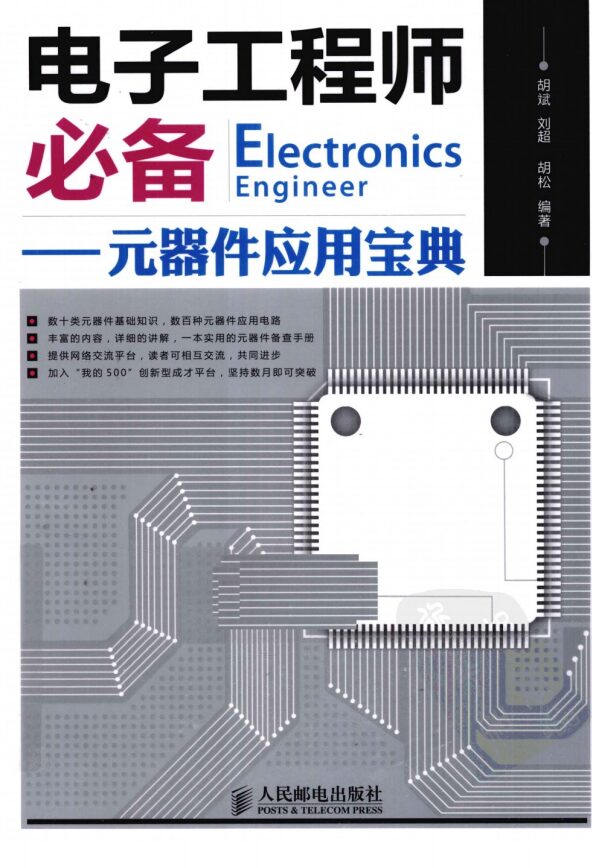
When engineers study electronic circuits, how can they do without the tools of the trade? The “Component Application Handbook” is a technical manual for component application, guiding you to master core skills as an engineer! The book introduces the basic knowledge and typical application circuits of various commonly used components, including explanations of circuit symbol information, identification methods for shapes and models, pin distribution rules and identification methods, pin polarity identification methods, explanations of main characteristics and main characteristic curves, typical application circuit explanations, analysis of circuits with the same function but different designs, and methods for replacing, selecting, adjusting, quality testing, and repairing components.
The ten must-read classic beginner-to-advanced books on PMICs are shown in the screenshots below:
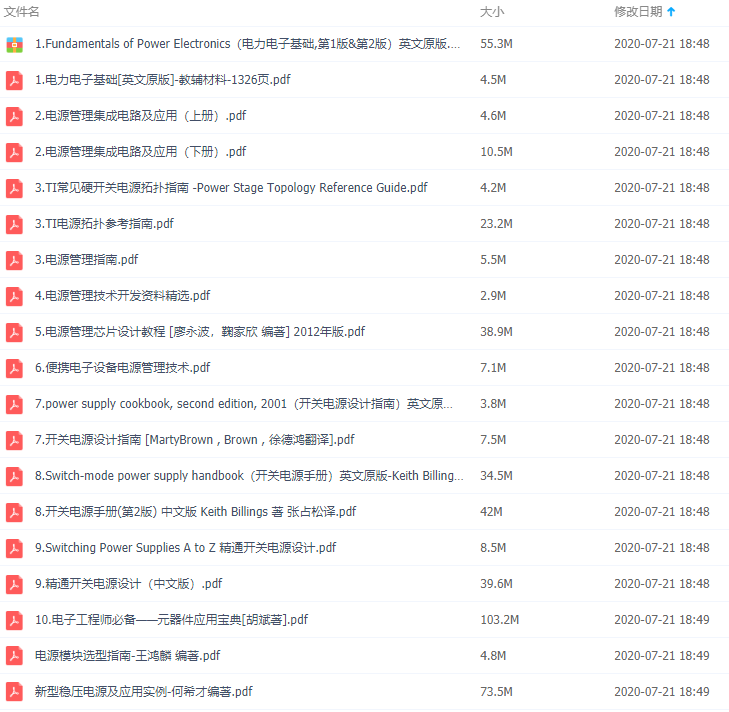
The materials are not limited to the above books but also include additional information on power module selection, nearly a hundred new voltage regulator designs, and application design examples, suitable for engineers with some power design experience to advance their projects. These are also excellent resources, and I recommend everyone to take a look!
How to Obtain All the Above PMIC Materials?
Press and hold the following QR code, scan to join the group, and complete the task to receive immediately!

If the scan fails, please contact the teaching assistant Xiao Bao.

